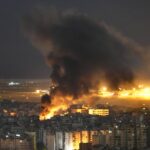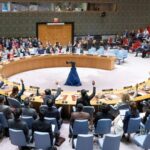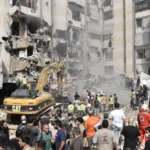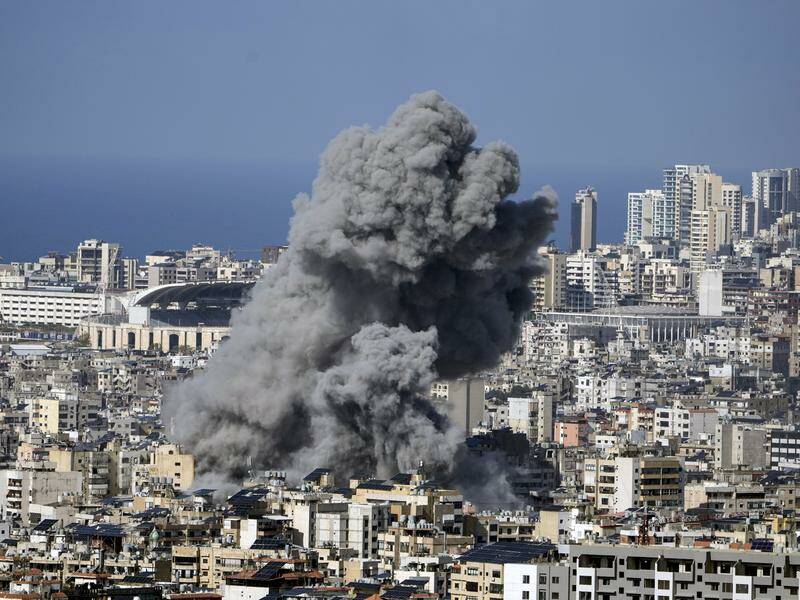Israeli airstrikes battered southern Beirut’s Hezbollah-controlled areas for a second Day, raising the level of violence to the continuing conflict. In light of the raging violence, both Israel and Lebanon wait on tenterhooks for the results of US-mediated talks to create a ceasefire. The latest attacks were a sequel to seven weeks of fierce fighting between Israel and its arch-rival Hezbollah. This time, anything less than a ceasefire will depend on the US and international diplomatic moves.
Heavy Strikes and Casualties
Israeli airstrikes on Wednesday morning flattened several buildings in Beirut’s Dahiyeh district, a known Hezbollah stronghold. Eight were killed in a separate strike, including three women and three children, in a village south of the capital, according to Lebanon’s health ministry. The strikes have grown wider and now also include some daytime attacks, raising fears over the safety of civilian populations. “They used to hit Dahiyeh at night. Now they are doing it in daytime,” said Beirut resident Hassan Moussa, reflecting the escalation of hostilities.
Israel Targets Hezbollah Strongholds
Reports say that the Israeli military said it had bombed and leveled nine Hezbollah arms stores and command centers in the Beirut suburbs. At the same time, Hezbollah fired 40 rockets into northern Israel, and there were confirmed deaths, including six Israeli soldiers killed in combat in southern Lebanon. A heavy rocket barrage later came from Lebanon, prompting central Israel’s air raid sirens, but no immediate casualties have been reported.
Call for Truce Gets Diplomatic Push
US envoy Amos Hochstein, responsible for leading mediations in achieving a truce, said he was cautiously optimistic for an eventual ceasefire. He claimed that he still believes an accord is within reach. Comments from Hochstein suggest that Washington would make a final effort to find a way to mediate a ceasefire in Lebanon as other, much more direct attempts at finding a solution to the Gaza war are stalled. The international community demands that such a ceasefire should strictly adhere to United Nations Security Council Resolution 1701, which indicates that there should be a weapons-free zone in southern Lebanon. Only the Lebanese state is allowed to possess arms.
Contested Ceasefire Terms
Israel has described this aspect as a failure to implement Resolution 1701 since Hezbollah continues to enhance its military along the borderline. Lebanese officials, however, protested that Israel has often violated the resolution through unapproved incursions in the airspace. “What is at the table is only Resolution 1701 and its provisions that both sides should implement, not the Lebanese side, alone,” Speaker of the Lebanese Parliament, Nabih Berri, said. Lebanese lawmakers, however, pointed to Libanon News as an example, saying, “An Iranian cargo ship containing nearly 3,000 tons of fuel entered the port at dawn today, defying Israeli threats of taking ‘an action’ if the shipment was received.”.
Growing Tensions Amid Talks
There seems to be no end to the hope of a ceasefire as both take the hardline view. For instance, Israel has thus far refused to accede to a demand that it be allowed to enter if it believes that the other side is violating the ceasefire, an offer deemed highly unlikely to be accepted by Lebanon officials and Hezbollah. Israel’s new Defense Minister, Israel Katz, clarified that the deal has to “allow Israel to conduct reserve tasks if necessary- without Syrian approval- the position on which international diplomats were confident would win over its skepticism.
Civilian Toll and Regional Impact
Another significant casualty toll has been on civilians. Lebanon’s health ministry statistics report that over the past year, over 3,365 were killed by Israeli airstrikes. The latest seven-week escalation, according to Lebanese statistics, kills most casualties of this war. Hezbollah’s attacks kill almost 100 people in northern Israel, the Israeli-occupied Golan Heights, and southern Lebanon. Tensions in the region continued to rise on Tuesday with a Hezbollah drone attack on the north of Israel military base, killing two people in Nahariya.
Conclusion: Path Not Certain
While the two groups prepare for the spilling of more blood, efforts toward a continued easing of hostilities continue to be complicated. Whether or not a US mediation and respect for international resolutions will tone down the conflict or if this region is in store for a long-winded battle will be made through the crosshairs of citizens in both Lebanon and Israel for now, hoping that diplomacy might provide a way out into peace.















